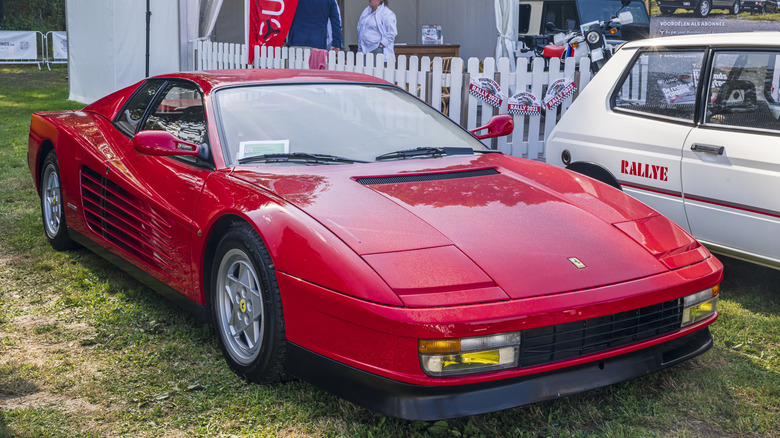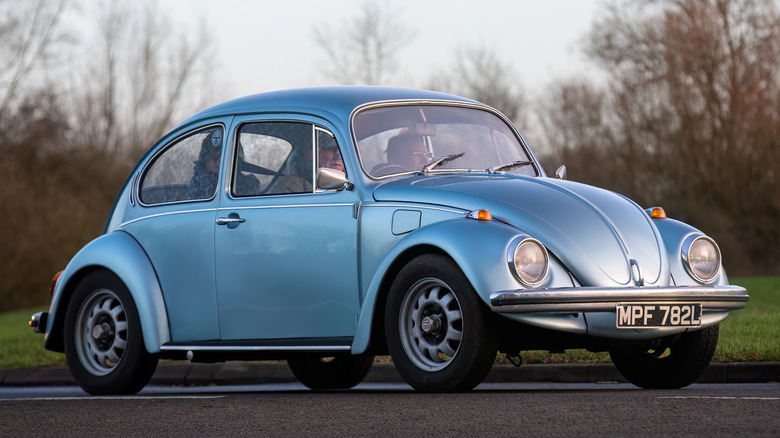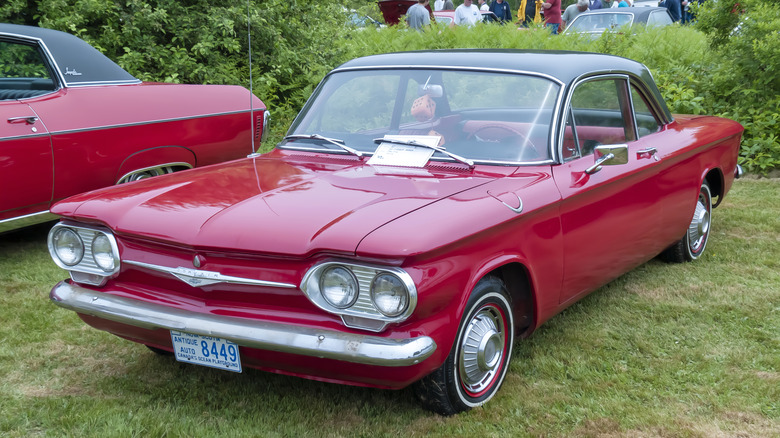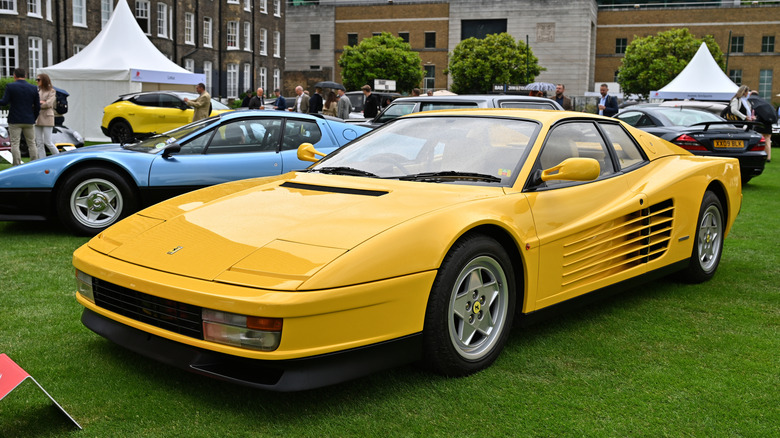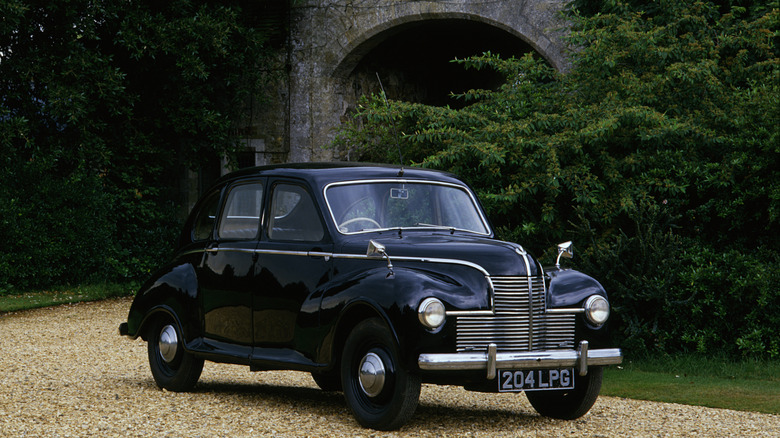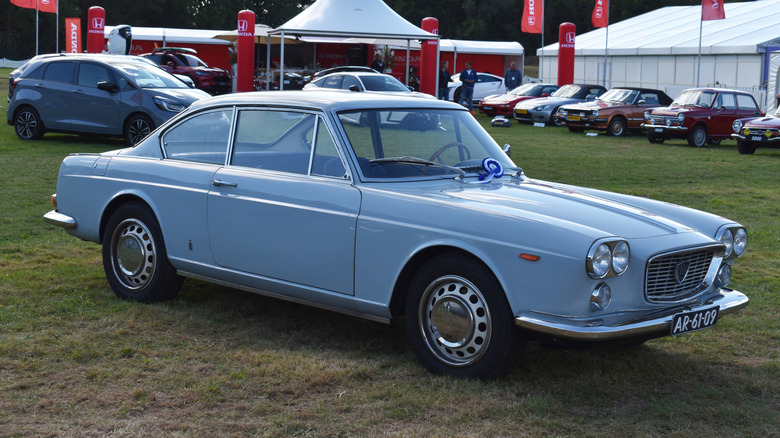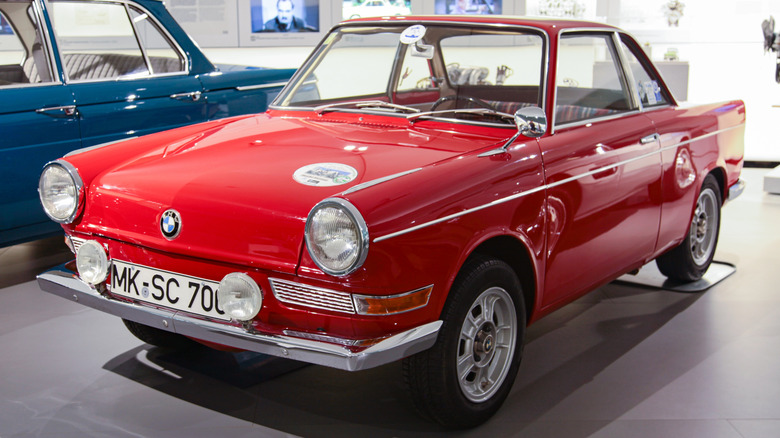6 Cars With Boxer Engines That Aren't A Porsche Or A Subaru
Sometimes, the auto world can be a very confusing place for non-experts. There's a lot of jargon to sift through, and you'd be forgiven for not knowing your ECU from your BEV and EBD. In other cases, though, manufacturers throw newer drivers a bone by using easy-to-understand names for components. A torque converter, for instance, provides power to an automatic transmission, while a boxer engine is so named because of the way it powers vehicles. Rather than vertically-arranged cylinders, a boxer engine is arranged horizontally. The movement of its pistons from the crankshaft appear to "punch" forward in a one-two sort of motion, akin to the action of a boxer's fists during a fight.
A boxer engine isn't necessarily superior to its inline engine counterparts, especially considering that they are rather uncommon and can be difficult and/or expensive to maintain or repair. However, there are significant pros to boxer engines, too; including potentially smoother handling, since the cylinder orientation lowers the center of gravity for any car its in. Despite their difficulty to work with, boxer engines have come to be quite popular with (and even characteristic of) particular brands and vehicle families.
The most prominent example, perhaps, is the Subaru Boxer Engine, used in vehicles across the lineup. However, some surprising models also utilize these types of engines.
Volkswagen Beetle
Whether you drive a truck, an EV, a compact, or anything else, there are certain types of vehicles that everyone can instantly recognize at a glance. The classic Ford Model T, for instance, is a design that has an almost timeless quality to it, as does Germany's iconic Volkswagen Beetle.
The Beetle was created to be unspectacular, but affordable and practical. It is not, strictly speaking, a Porsche — though Ferdinand Porsche was instrumental in the design of the VW 39 prototype in 1939. The first true Porsche arrived around a decade later, in the shape of 1948's type 356 Roadster. The Beetle, meanwhile, debuted with a flat-four engine; one that would be 1,131cc and boast a reasonable-for–the-era 25 brake horsepower. This boxer, of course, would develop more and more of a formidable punch as the Beetle's long life wore on. By 1973, the 1.8L engine in the 411/12 could hit 85 brake horsepower.
The iconic Volkswagen model family continued to use the boxer engine in some capacity until 2003, giving the engine a run of more than six decades in the Beetle. It was a fitting powertrain for the plucky vehicle, which was known for its ease of control, practicality, and reliable nature. VW Beetles would become a favorite ride of many, and while it was no powerful beast, it had a unique aspect to its design that proved you don't have to sacrifice creativity and style to be sensible.
Chevrolet Corvair
As is always the case, a success story in the auto industry prompts a response from rivals. It quickly became apparent that Volkswagen's nicely curved Beetle was becoming very popular in its corner of the market, and so Chevrolet wanted to hit back with a rival for it. That rival first arrived in 1960, in the shape of the Corvair.
Chevy's effort would not enjoy the long and varied life that the Beetle did, lasting only until the end of that decade — the final vehicle in the family was a Corvair Monza that was produced in May of 1969. By this time, the Corvair Monza boasted 96 horsepower and was equipped with the Turbo-Air Six engine, another curious boxer.
This was the last rendition of the Corvair, and it was something of an afterthought in the brand's lineup in its final year of production. Just 6,000 of them were created that year, making it clear that Chevy wasn't anticipating a big late rush in interest. Quite the opposite, in fact: The Corvair was plagued by problems at the twilight stages of its life, and the company felt it best to stop manufacturing them altogether. Nonetheless, a new appreciation for the model family endures today, and a vintage Corvair is sure to turn heads wherever it may go. It's a real "they don't make them like that any more" sort of vehicle.
Ferrari Testarossa
If you're looking for something a little sportier with a boxer engine — outside of Porsche's repertoire, of course — Ferrari's sleek Testarossa should fit the bill nicely. There's an interesting thing to note about the Testarossa's engine, though. Rather than a conventional boxer, as Ferrari notes in its rundown of the Testarossa, it deployed "twin belt driven overhead camshafts per bank, now driven directly off the crankshaft instead of via idler gears on the earlier Boxer models."
The Testarossa's sophisticated powertrain included Bosch KE-Jetronic and Marelli Microplex MED 120 B technology, which helped to push the model as far as 380 brake horsepower in the case of the version made for the U.S. market. The model was first released in 1984, and could top out at 180 mph. Its original guise was only developed until 1991, but the model that followed would top the performance of the first flat-12, pushing that max speed to 195 mph and achieving 428 horsepower.
The final release in the wider model family endured until 1996, in the stylish shape of the F512 M. This vehicle pushed power a little further still to 440 horsepower, and continued to be powered by a flat-twelve — albeit one that was a little lighter, having been modified with a different crankshaft and elements of titanium. This engine was rather different to the boxers we've seen so far, but the principle remains very similar.
Jowett Javelin
Next up is the Jowett Javelin, an interesting little British classic that first appeared in the 1940s. Launching in 1949, its name evokes images of a sleek, slender, speed machine, and while such a thing may have been difficult to find in that era, it was a surprisingly capable car. Its top speed maxed out at 76 mph, thanks to its 50 horsepower.
This doesn't sound like anything at all today, but the Javelin was quite the performer in its day: With an aerodynamic and innovative design that included the nation's first curved windscreen, it was quite a formidable racing machine too. It achieved almost immediate success, winning 1949's Monte Carlo Rally.
Its initial boxer engine had a capacity of 1,486cc, and boasted several of the primary advantages that engines of this type would become known for. Boxers tend to provide more freedom when it comes to positioning, as a result of their size, and this saves some precious space inside the vehicle. It has quite a roomy interior, as opposed to a lot of models that technically seat a certain number, but not comfortably. It was quite an impressive model at the time, though it would be rather short-lived as a result of Jowett's own fortunes. The company ceased to exist as an independent manufacturer in 1954. Nonetheless, those in the know continue to appreciate this vintage model.
Lancia Flavia
Lancia's Megagamma probably isn't the first vehicle that comes to mind when considering cars with boxer engines. Quite an obscure and curious offering, it was unveiled at the Turin Auto Show back in 1978, a concept that adapted the Lancia Gamma into something ... well, it's debatable whether "mega" is the appropriate prefix.
Before the Megagamma or indeed the Gamma, though, it was Lancia's Flavia that introduced something new and unique into the Italian auto world. Some impeccable models have come out of the European nation over the years, but until 1960, none of them utilized a boxer engine or front-wheel drive on a front-mounted engine. The innovative Flavia, designed by the brand's Antonio Fessia, would introduce all of these things.
The first guise of the Flavia was equipped with a 90 horsepower boxer with a 1.5L capacity. The engine was not the only unique aspect of the model, however, as its disk brakes were also unheard of for Lancia (and other domestic brands to boot). Development costs would make Lancia's independent position untenable, and Fiat stepped in at the end of the decade, but this detracts nothing from what the Flavia managed to achieve. It was one of those models that introduced a stylish new paradigm — as Italian brands are wont to do.
BMW 700
Which models come to mind when you consider the BMW brand? Perhaps one of the most successful BMWs in history, such as the 3 Series E46 or the 4 Series Gran Coupe. The illustrious German beamer brand does have some impressive models in its repertoire. Next to some of these vehicles, you may not even spare a thought for the 700. It ceased production way back in 1964, after all, having been produced for only five years. Even so, it boasted certain characteristics that make it a bit unusual within the history of the marque.
At the time of the 700's launch, the company had a decades-long history of employing boxer engines in motorcycles. The company's very first production bike, the BMW R 32, launched in 1923, equipped with a flat-twin of Max Friz's design. In the years to come, boxers would find their way into other BMW vehicles — crucially in the 600, which sported an adapted R67 boxer previously seen in the brand's bikes.
The 700 that followed it was something of a last chance saloon (or a last chance coupe) for the marque, which was in dire financial straits at the time. However, the 700's pleasingly potent boxer engine — topping out at 75 mph and offering 32 brake horsepower — combined with design elements of the more luxurious BMWs of the era to make it a highly desirable new model. This new machine's success was a huge relief for BMW.
